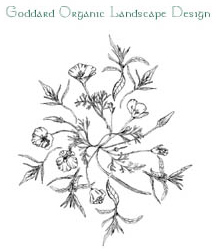



























|

Winterizing Your Garden
[Sierra foothills focus]
The yearly growing cycle is coming to a close yet the work of nature continues. For all of us who enjoy the rewards of gardening during warm months of the year, we have an opportunity to bolster the health of our land by giving back to it at this time. As Fall ends and Winter begins officially on December 21, bringing more rains, snow and deep cold, we can take solace in the solstice by doing a number of things for Mother Earth: pruning, preparing the soil, and planting.
Pruning benefits are many. These include beautification, disease control, safety of buildings, and fire prevention. An uncluttered wooded area is a beautiful site that enhances planted areas. Removing dead or diseased branches is the only way to stop the spread of contagious tree illnesses including insect infestations and fungal diseases.
Given that many of our remote areas are covered with second and third-generation tree growth, the trees may grow too close together. Active thinning of excess trees can resolve this problem. Healthy cedars and Douglas Firs need space for light to reach them and for healthy dense canopies to develop. With the trees that remain, pruning is essential. In stands of trees, I recommend cutting all of the dead branches, which are usually the lower ones that don't get adequate light. This prevents entry of fungus spores and insects. When these excess branches are cut close to the trunk, the trees exhibit a clean, natural appearance that attractively opens up your space. Pruning also reduces fire risk and prevents excess roof weight (for trees near the house and other structures). PG & E suggests a cleared area of 10 feet for these purposes.
Speaking of fire, burning season has begun. Enjoy the sticks and branches you've gathered from all that pruning in the old pot-bellied stove or fireplace for warmth. The rest you can process with controlled burns on allowed burn days. Call fire department/Forest Service. Chipping is a good way to get mulch from this wood; chippers are commercially available. Also, Departments of Forestry often have a free chipping program if you don't want to buy or rent equipment.
Ah, the falling of the leaves. Rather than cursing them for all that raking work, you can look at the bright side. The leaves' falling can facilitate healthy soil preparation . . . and indoor romance. Curious? Read on.
That compost pile you worked so hard on throughout the year? I like to put that rotted material into garden spaces, along with horse manure, and turn it all under. This will add warmth and nutrients to the soil. I choose horse over cow manure because of the greater amount of steroids and antibiotics that go into cows. What goes in must come out. Then I put a very thick layer of leaves over the entire garden -- an easy way to clean the yard and put the garden to bed for winter. The layer of leaves protects the garden from erosion and weed growth and enriches the soil as the leaves decompose. Wood chips are not recommended because they can increase soil acidity and will not break down over the winter. They are, however, appropriate around acid-loving plants such as rhododendrons, azaleas and pines.
Many of us have favorite old black oaks on our property and now can see the mistletoe with the oak leaves gone. Now is a good time to cut out the mistletoe and bring it inside for holiday smooching, as mistletoe is a parasitic organism that can eventually kill your oaks. Yes, mistletoe is far more romantic indoors than on your oaks outside. Childcare safety: Be sure the mistletoe is secure and out of reach of children as it is a poison if ingested.
Most people do not consider winter time for plantings. However, this actually is a great time to plant trees, shrubs and perennials. Trees, shrubs, and perennials planted now will have the entire wet season to get established. This also makes your work easier in terms of watering to get newly planted plants established during the dry season. It is still a good time to plant bulbs. These rhizomes and bulbs which are excellent for spring color are diverse, plentiful and inexpensive. They are usually planted 1.5 to 2 feet deep with some rich soil that is a mix of compost, loam and native soil. Always plant with the pointed end up. Here is a blooming tip for iris: add a little bone meal to the soil, you will get larger and a greater number of blooms. This mixing of rich soil with that found on the premises helps the new plants be prepared when their roots reach the surrounding hard ground strata.
If you don't wish to wait until Spring for bulbs to bloom, you can force them by using the following method. Get a pot with drain holes. It can be large enough to hold several bulbs. You can use small rocks for drainage or that special bulb filter, obtainable at nurseries. Then put a layer of potting soil and place the bulbs in pointed side up. fill in soil around the bulbs to just cover the tips, then water them. Place them in a cool place at 48 degrees F or a little cooler (but do not freeze them) for 12 to 15 weeks. You can also bury the pots in the ground. Then bring them into a warm room, and in 2-3 weeks, voila! Flowers will be up. This method works especially well for hyacinths, daffodils and narcissus. Amaryllis and paperwhites do not require the cold exposure and can be put in a warm environment immediately after planting.
Happy growing!,

Mark Goddard.
|



Soil Health - Where does our food come from? Soil health has an eventual impact on our health because it is the most basic foundation of the planet's web of life, and humans are the ultimate top of the food chain. If the soil has less nutritive value, fruits and vegetables produced in it will have less nutritive value... READ MORE
Winterizing Your Garden - The yearly growing cycle is coming to a close yet the work of nature continues. For all of us who enjoy the rewards of gardening during warm months of the year... READ MORE
|








